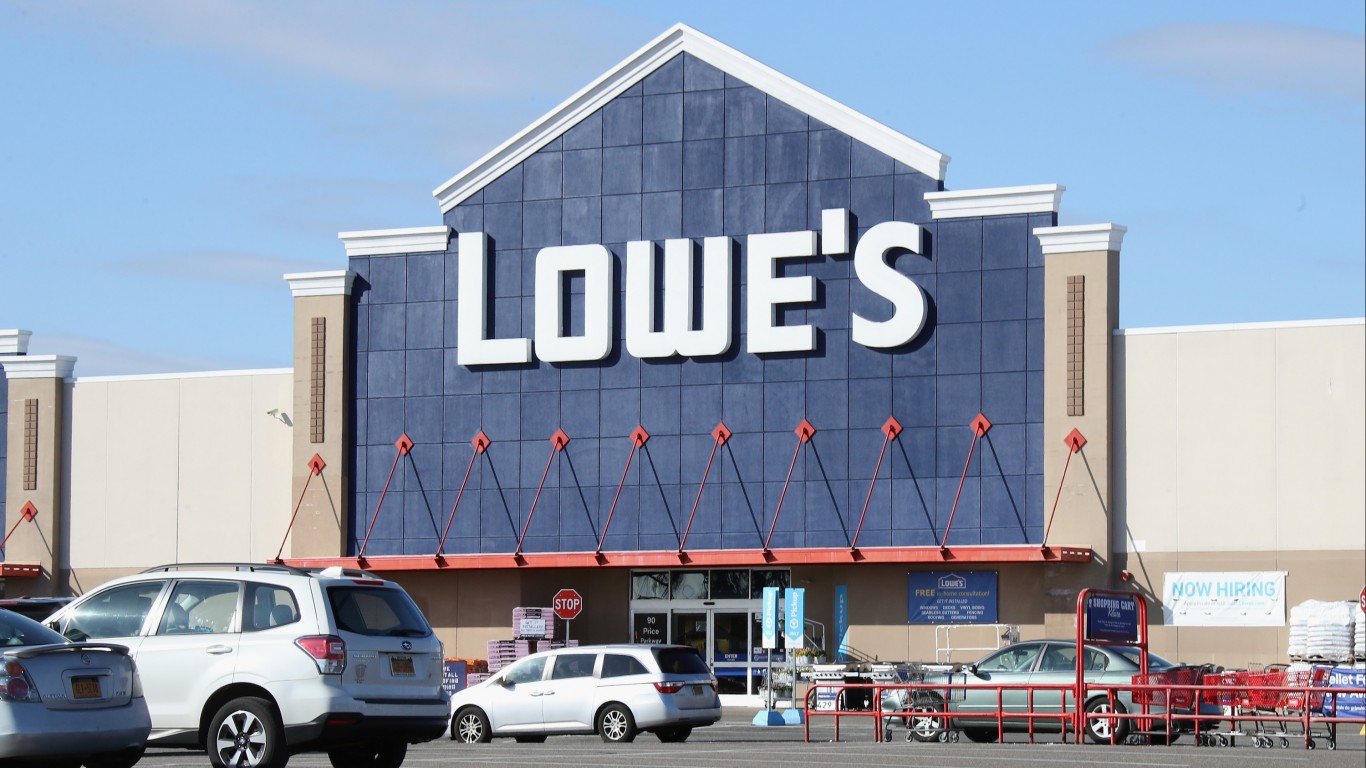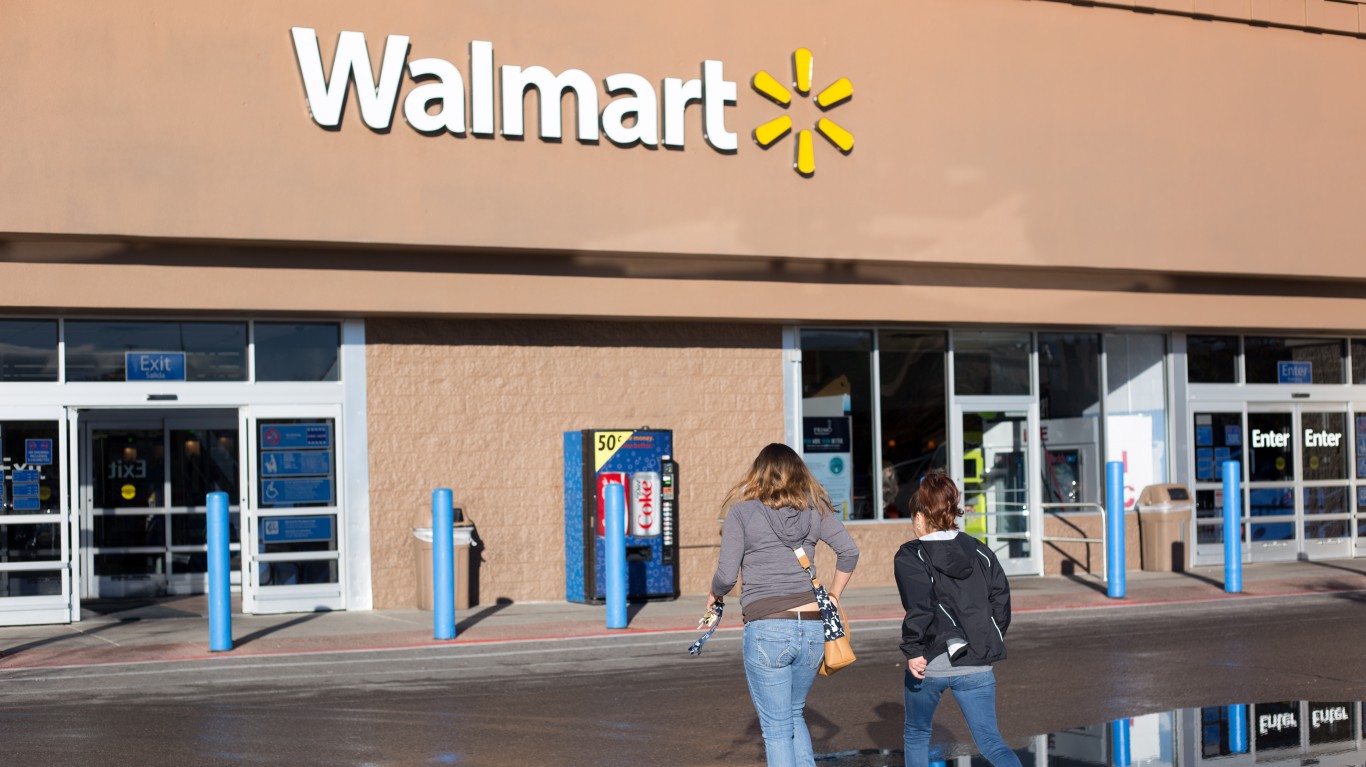
When Lowe’s Companies Inc. (NYSE: LOW) reported second-quarter 2020 results before markets opened Wednesday, the home improvement store posted diluted net earnings per share (EPS) of $3.75 in the quarter on revenues of $27.3 billion. Consensus estimates had called for EPS of $2.95 and revenues of $24.3 billion. In the same quarter last year, the company reported EPS of $2.15 and revenues of $21.0 billion.
Same-store sales rose by 34.2% year over year and 35.1% in the U.S. home improvement segment, which the company attributes to “consumer focus on the home, core repair and maintenance activities, and wallet share shift away from other discretionary spending.” CEO Marvin Ellison also noted that “our sales momentum continues into August.”
Construction supplies have been identified as an essential business under guidelines that led to the lockdowns related to the COVID-19 pandemic. While both Lowe’s and rival Home Depot Inc. (NYSE: HD) no doubt saw a revenue increase as workers were ordered to stay home, the big boon to their business probably has more to do with a new construction boom.
According to the Census Bureau’s report on new residential construction issued Tuesday, new housing starts rose by 23.4% year over year in July and by 22.6% month over month from June. New building permits issued in July were 18.8% higher month over month and 9.4% higher than a year ago. Construction of nearly 1.5 million new homes began in July and just as many new permits were also issued during the month.
Ellison, who took over the CEO job two years ago, has focused on boosting the e-commerce business and attracting more professional builders and contractors. In the company’s annual report for last year, Lowe’s noted that “Pro customer sales have … been delivering [comparable sales] well above the company average.” In the second quarter, Ellison said, all merchandising divisions showed comparable sales growth of more than 20%.
Home Depot said last year that its professional customers made up just 4% of the stores’ numbers but accounted for 46% of sales. At the same time, Lowe’s said that its pro customers made up about 20% to 25% of company sales.
Without more detail from both companies, it is a bit difficult to extrapolate where each is headed. In terms of total sales, Lowe’s has more room to grow than does Home Depot. New pro customers for Lowe’s could come from Home Depot and from local stores that don’t have the buying power of one of the megastores. Home Depot also could snatch away some pro customers from Lowe’s, as well as wrangle more locals.
But the odds in this game favor Lowe’s, especially if the company consistently can deliver more in the way of service than Home Depot. Pricing will matter, of course, but making it easier for the pros to do business with one or the other will be the differentiator. Lowe’s, in its role as number two, has more incentive to excel in service.
As for all the home improvement do-it-yourselfers, their contribution to second-quarter sales at both companies was boosted by the stay-at-home orders related to the coronavirus outbreak and the expanded federal unemployment payments that could have freed up some consumer cash to undertake small home improvement projects.
The uncertainty around the pandemic and the impact on consumer demand makes it hard to forecast very far ahead. For the current quarter, analysts expect Lowe’s to post EPS of $1.55 on sales of $18.4 billion. For the full year, analysts are looking for EPS of $7.30 and sales of $79.1 billion.
For Home Depot, consensus estimates for the third quarter call for EPS of $2.64 and sales of $28.7 billion. For the full year, the consensus forecast is EPS of $10.61 and sales of $118.2 billion. Expectations for both stores certainly will be adjusted higher, based on second-quarter results.
Shares of Lowe’s traded up about 0.6% Wednesday morning to $158.90, after posting a new 52-week high of $162.89 earlier in the session. The 52-week low is $60.00, and the consensus 12-month price target is $164.24.
Home Depot also posted a 52-week high after reporting earnings on Tuesday. The stock’s range is $140.63 to $290.58. Shares traded down about 0.3% Wednesday morning at $284.11. The stock’s price target is $287.65.
It’s Your Money, Your Future—Own It (sponsor)
Retirement can be daunting, but it doesn’t need to be.
Imagine having an expert in your corner to help you with your financial goals. Someone to help you determine if you’re ahead, behind, or right on track. With SmartAsset, that’s not just a dream—it’s reality. This free tool connects you with pre-screened financial advisors who work in your best interests. It’s quick, it’s easy, so take the leap today and start planning smarter!
Don’t waste another minute; get started right here and help your retirement dreams become a retirement reality.
Thank you for reading! Have some feedback for us?
Contact the 24/7 Wall St. editorial team.
 24/7 Wall St.
24/7 Wall St.



